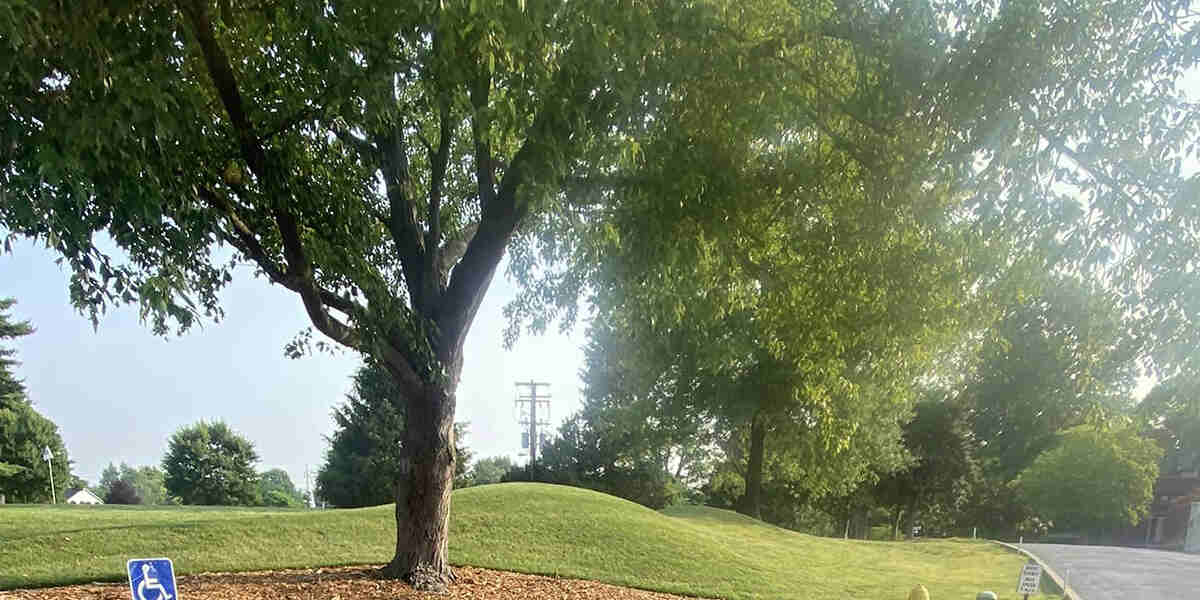What is tree topping, and why should you avoid it at all costs?
In this post, New Leaf Tree Service, Louisville’s expert tree service, explains more about this damaging practice.

What Is Tree Topping?
The process involves removing significant amounts of branches and leaves from the top of the tree. In extreme cases, people will remove the entire crown, believing it to be the best way to stop the tree from growing too tall. However, topping a tree like this can kill it.
Why Is Tree Topping So Bad For Trees?
When you learn how trees work, you’ll understand why tree topping damages the plant so severely.
At the core, removing a large portion of the tree’s canopy and foliage impacts its ability to photosynthesize. A similar analogy would be cutting your daily food intake to about a third of what it is now. If you survived, you’d lack the energy to perform your daily tasks, making recovery difficult.
Topping a tree causes it a great deal of stress. Over time, it will weaken and go into starvation mode. It’s also not just the lack of food that poses a threat; the lack of foliage also puts the trunk at risk of sun scald.
If your topped tree does sprout again, you’ll see weak limbs that break easily. The cuts will also put the tree at great risk of decay. A tree can survive the odd broken branch, but healing so many wounds simultaneously typically proves challenging.
Why Topped Trees Are Dangerous
What is tree topping, and could it create hazardous trees? Yes, cutting off the top of your tree gives rise to several safety concerns, such as:
- Decay or pest infestation. All that sap that drips out from each cut attracts pests. The open wounds then allow in bacteria. Proper pruning near branch collars alleviates this risk, but topping ignores this sound principle.
- Severe distress. Trees will expend a lot of energy trying to repair damage, even if that means depleting their resources. If they begin to starve, these trees may never recover.
- Weak limbs. Tree limbs that are unable to hold up in bad weather break and fall. The quick-growing sprouts without branch collars don’t have the support necessary when the boughs become heavy.
- Cluttering. A topped tree’s first response will be to recover its canopy by sending out vertical shoots. These grow quickly, unbalancing the tree over time. The thick forest of sprouts makes the tree tall again, but they restrict airflow and increase wind resistance for a top-heavy structure that could become unstable.
- Shape issues. Whenever humans interfere with how a tree grows, they risk upsetting the natural balance. Tree topping leaves an ugly mass of cut-off edges, which affects the tree’s structure from then on.
- Stunted growth. While some trees recover, they’re never the same again. Plus, topping can set back tree development by several seasons or even decades.
What To Do Instead of Topping Trees
The best solution is to carefully consider what tree you’re planting. How big will it get? What are the weak points of the species that may need trimming or pruning?
It’s difficult to curtail a tree’s height once it’s established. However, careful structural pruning by an arborist may achieve a similar effect without killing your tree.
Contact Our Tree Experts for Professional Advice!
When considering the potential costs of a tree branch falling onto someone or your vehicle, preventative measures make sense. What is tree topping better replaced by? Why not chat with New Leaf Tree Service at (502) 419-9899 about what to do when pruning, relocating, or planting big trees?

